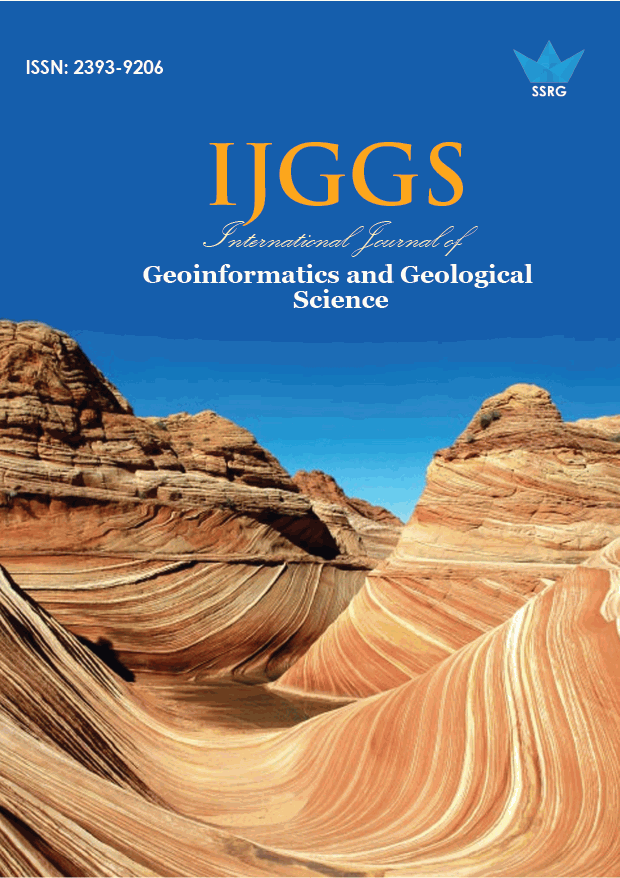A Study on Threats and Sustainability of Mangrove Vegetation in India

| International Journal of Geoinformatics and Geological Science |
| © 2016 by SSRG - IJGGS Journal |
| Volume 3 Issue 2 |
| Year of Publication : 2016 |
| Authors : E.Manjari Nandy, Aswin Alora |
How to Cite?
E.Manjari Nandy, Aswin Alora, "A Study on Threats and Sustainability of Mangrove Vegetation in India," SSRG International Journal of Geoinformatics and Geological Science, vol. 3, no. 2, pp. 12-16, 2016. Crossref, https://doi.org/10.14445/23939206/IJGGS-V3I4P103
Abstract:
Mangroves are one of the most endangered ecosystems globally found within the intertidal zones of tropics and subtropics. They afford numerous ecological and economical ecosystem services subsidising to coastal erosion protection, water filtration, provision of areas for fish and shrimp breeding, provision of building material and medicinal ingredients, and the attraction of tourists, amongst many other factors. Deprivations of mangrove ecosystems in India aremostly due to continuous growth in anthropogenic accomplishments such as alteration of mangrove wetlands for aquaculture and destruction of mangrove forest for timber. In the coastline areas residents are at dangers of trailing their livelihood and ecological communities are in the approach of extermination. The operative preservation and administration of mangrove habitats should be deliberated in association with local community contribution and application of remote sensing method and Geographic Information System (GIS)-based complete database approach. In this paper, we suggested that the risks and hazards of mangrove vegetation around the world. The purpose of this paper is to offer a complete overview and comprehensive summary of all of the work assumed, addressing the range of remotely sensed data applied for mangrove ecosystem charting, as well as the several methods and practices used for data evaluates, and to discuss their prospective and restrictions. A mixture of remote sensing and GIS-based methodology will have important ecologic and commercial welfares by gaining real-time data from isolated areas. This approach has cherished suggestions to other endangered mangrove wetlands universally.
Keywords:
Mangrove habitat, Climatic vulnerability, Management, remote sensing and Geographic Information System, Mangrove ecosystem.
References:
[1] Giri, C.; Pengra, B.; Zhu, Z.; Singh, A.; Tieszen, L.L. Monitoring Mangrove forest dynamics of the Sundarbans in Bangladesh and India using multi-temporal satellite data from 1973 to 2000. Estuar. Coast Shelf Sci. 2007, 73, 91-100.
[2] Seto, K.C.; Fragkias, M. Mangrove conversion and aquaculture development in Vietnam: A remote sensing-based approach for evaluating the Ramsar Convention on Wetlands. Glob Environ. Change 2007, 17, 486-500.
[3] Blasco, F.; Gauquelin, T.; Rasolofoharinoro, M.; Denis, J.; Aizpuru, M.; Caldairou, V. Recent advances in mangrove studies using remote sensing data. Mar. Freshwater Res. 1998, 49, 287-296.
[4] Manson, F.J.; Loneragan, N.R.; McLeod, I.M.; Kenyon, R.A. Assessing techniques for estimating the extent of mangroves: topographic maps; aerial photographs and Landsat TM images. Mar. Freshwater Res. 2001, 52, 787–792
[5] Selvam, V.; Ravichandran, K.K.; Gnanappazham, L.; Navamuniyammal, M. Assessment of community-based restoration of Pichavaram mangrove wetland using remote sensing data. Curr. Sci. 2003, 85, 794-798.
[6] Ramasubramanian R, Gnanappazham L, Ravishankar T, Navamuniyammal M (2006) Mangroves of Godavari – analysis through remote sensing approach. WetlEcolManag 14: 29-37.
[7] Satyanarayana B, Mohamad KA, Idris IF, Husain ML, Guebas FD (2011) Assessment of mangrove vegetation based on remote sensing and ground truth measurements at Tumpat. Int J Remote Sens 32: 1635-1650.
[8] Gang PO, Agatsiva JL (1992), The current status of mangroves along the Kenyan coast: a case study of Mida Creek mangroves based on remote sensing. Hydrobiol 247: 29-36.
[9] Bahuguna A, Nayak S, Roy D (2008) Impact of the tsunami and earthquake of 26th December 2004 on the vital coastal ecosystems of the Andaman and Nicobar Islands assessed using RESOURCESAT AWiFS data, Int J App Earth ObsGeoinf 10: 229-237.
[10] Cornejo RH, Koedam N, Luna AR, Troell M, Guebas FD (2005) Remote Sensing and Ethnobotanical Assessment of the Mangrove Forest Changes in the Navachiste-San Ignacio. J EcolSoc 10: 16
[11] Gilman EL, Ellison J, Jungblat V, Lavieren HV, Wilson L et al. (2006) Adapting to Pacific Island mangrove responses to sea level rise and other climate change. Clim Res 32: 161-176.
[12] Kapetsky JM (1987), Conversion of mangroves for pond aquaculture: some short-term and long term remedies. FAO Fisheries Report Supplement, Rome 370: 129-141.
[13] Verheyden, A.; Dahdouh-Guebas, F.; Thomaes, K.; De Genst, W.; Hettiarachchi, S.; Koedam, N. High-resolution vegetation data for mangrove research as obtained from aerial photography. Environ. Develop. Sustain. 2002, 4, 113-133.
[14] Fromard, F.; Vega, C.; Proisy, C. Half a century of dynamic coastal change affecting mangrove shorelines of French Guiana. A case study based on remote sensing data analyses and field surveys. Marine Geology 2004, 208, 265-280.
[15] Danielsen, F. Sørensen, M.K. Olwig, M.F. Selvam, V. Parish, F. Burgess, N.D. Hiraishi, T. Karunagaran, V. Rasmussen, M.S. Hansen, L.B. Quarto, A. Suryadiputra N. The Asian tsunami: A protective role for coastal vegetation Science 2005, 310, 643.
[16] Guebas FD, Mathenge C, Kairo JG, Koedam N (2000) Utilization of mangrove wood products around mica creek (Kenya) amongst subsistence and commercial users. Econ Bot 54: 513-527.
[17] Guebas FD, Jayatissa LP, Nitto DD, Bosire JO, Seen DL, et al. (2005) how effective were mangroves as a defence against the recent tsunami? CurrBiol 15: 443-447
[18] Satyanarayana B, Raman AV, Lokman MDH, Dehairs F, Sharma VS, et al. (2009) Multivariate methods distinguishing mangrove community structure of Coringa in the Godavari delta, East coast of India. AquatEcos Health Manag 12: 401-408.
[19] Ravishankar T, Navamuniyammal M, Gnanappazham L, Nayak SS, Mahapatra GC, et al. (2004) Atlas of Mangrove Wetlands of India (Part - 3 Orissa) M.S. Swaminathan Research Foundation, Chennai.
[20] Pattanaik C, Prasad N (2011) Assessment of aquaculture impact on mangroves of Mahanadi delta, East coast of India using remote sensing and GIS, Ocean Coast Manag 54: 789-795.

 10.14445/23939206/IJGGS-V3I4P103
10.14445/23939206/IJGGS-V3I4P103